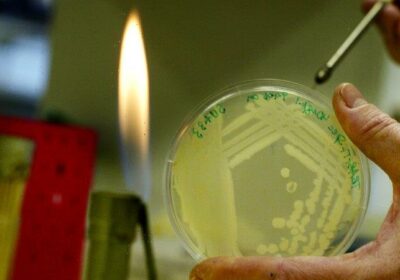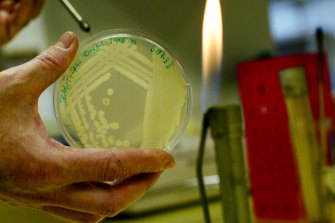Victorian state schools start switching off natural gas

Bunsen burners are beginning to make way for electric hot plates as natural gas is progressively phased out as an energy source in Victorian schools. Several newer schools are in line to have their gas heating connections switched off this year.
The energy switch is being pursued on environmental and cost-saving grounds as wholesale gas prices soar on Australia’s east coast market and the state chases a target of net-zero emissions.
Natural gas is set to be phased out in government schools in Victoria. Credit:Andrew Meares
The change means Bunsen burners will not be a feature in some future school science labs, such as Preston High School’s $18 million third stage, due to open in 2023, where senior students will instead use electric hot plates. Junior students in the school’s older buildings will continue to use Bunsen burners.
Some state secondary schools that opened this year, including Cranbourne West Secondary College and a new Oberon High School campus in Geelong, have stuck with Bunsen burners in their science labs but are otherwise running entirely on electricity, including in kitchens and hospitality classrooms.
Tender documents reveal that the Victorian School Building Authority hopes to switch off the gas heating units at several recently built schools this year as part of its “intention to phase-out natural gas to school sites in the future”.
Schools at which gas heating could be decommissioned this year include Casey Fields Primary, Grayling Primary, Davis Creek Primary, Keysborough Gardens Primary and Lucas Primary.
A Victorian government spokesperson said the government was phasing out natural gas for heating purposes to new school sites and to schools undergoing upgrades.
The spokesperson did not provide a cost or timeline for the planned phase-out.
“Other methods of heating are considered more appropriate for schools, particularly when considering life-cycle costs such as utilities and maintenance.”
One hundred per cent of government electricity usage will be sourced from renewable energy by 2025, including at government schools, the spokesperson said.
But Berwick Lodge Primary School principal Henry Grossek said electricity was a bigger drain on his school’s financial resources than gas usage.
Mr Grossek said he hoped the government would grant schools “a commensurate increase in our utilities budget for electricity” once the phase-out occurred.
According to a consultation paper released in late June, the Andrews government is preparing to put out a “gas substitution road map” later this year as part of its target to achieve net zero greenhouse gas emissions by 2050.
“Switching gas appliances to electrical options and shifting to alternative gases such as hydrogen and biogas will all likely play a role in achieving net zero emissions, while promoting a sustainable, resilient and prosperous Victoria,” the consultation paper states.
The consultation paper also notes that the upfront cost of switching from gas to electric appliances could be challenging.
Environment Victoria campaigns manager Nicholas Aberle said schools with solar panels installed would be best placed to go gas-free, given their need for gas heating is limited to daylight hours.
“It will come with an upfront cost, but what schools have going for them is that they only need heating during the day which is when solar panels are doing their best, which is a different proposition to a house where, in normal times, people need heating first thing in the morning and in the evening,” Dr Aberle said.
Victoria is responsible for 37 per cent of domestic gas consumption on the east coast gas market, significantly more than any other state or territory, most of which is used for residential and commercial heating.
There are more than 1550 government schools in Victoria.
Liam Mannix’s Examine newsletter explains and analyses science with a rigorous focus on the evidence. Sign up to get it each week.
Most Viewed in National
From our partners
Source: Read Full Article
